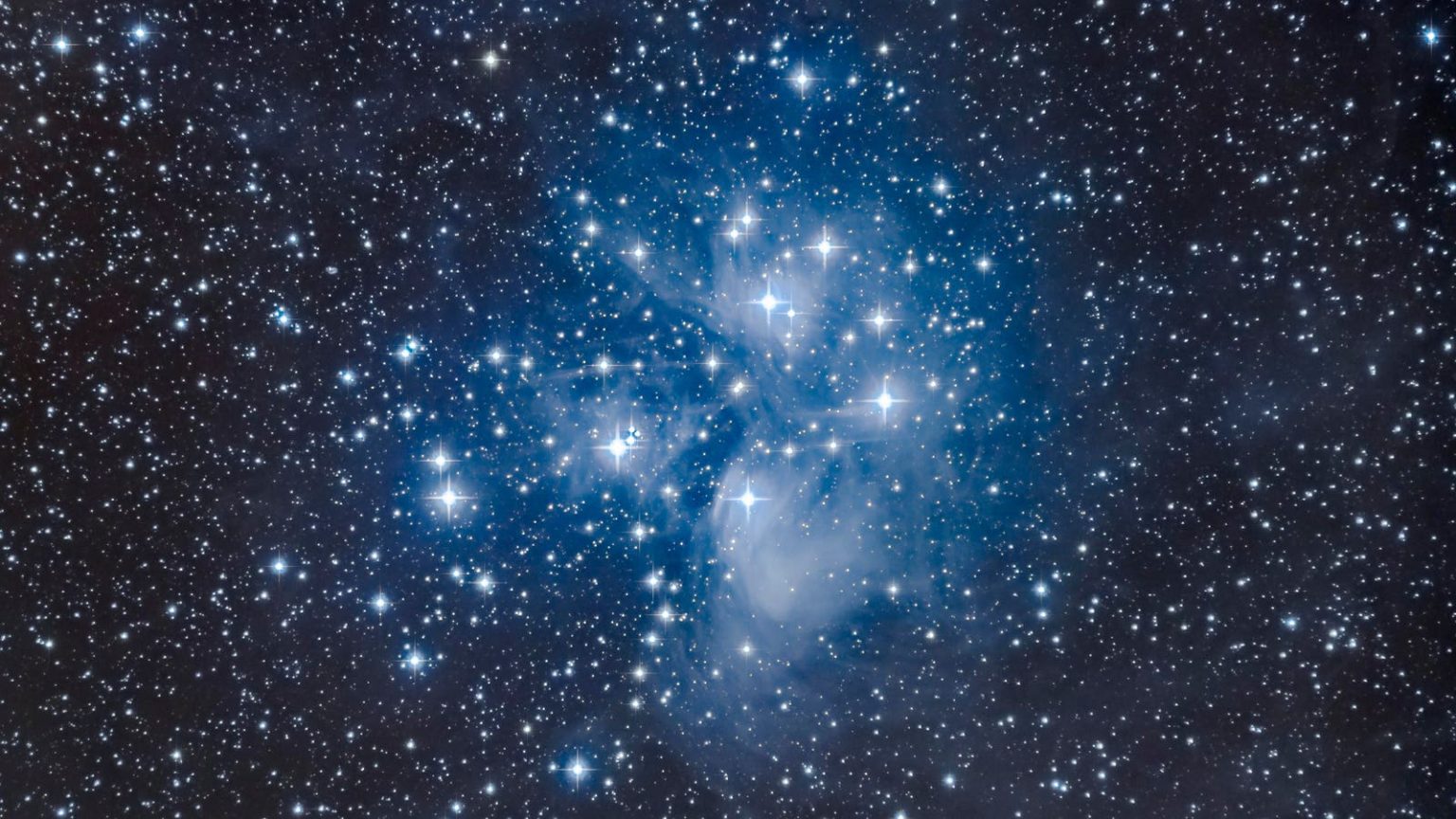If you have ever looked at the night sky from the northern hemisphere during the fall or winter, you will almost certainly have seen the Pleiades (pronounced “plee-er-deez”).
One of the most prominent open clusters of stars in the night sky, the Pleiades, consists of around 800 stars, yet they get the nickname the “Seven Sisters” because seven are bright enough to be made out quickly with the naked eye. Six are easy. The seventh is very difficult!
This weekend, the stars of the Pleiades—called M45 by astronomers—reach their highest point in the sky around midnight, as seen from North America, according to In-The-Sky.org. That makes it arguably the best time of the year to see the cluster in the darkest possible night sky. Astronomers call this moment an object’s culmination.
If the sky is clear where you are, it’s a great time to observe the Pleiades—though they are easily visible from September through March.
Here’s when and where to see the Pleiades this week—and everything else you need to know about one of the jewels of the night sky:
Where To Find The Pleiades
The Pleiades is in the constellation of Taurus, which currently rises in the southeast after dark and is high in the south at midnight. An easy way to find it is to locate Orion’s Belt—those famous three stars in a line—and trace an imaginary line going up and to the right. The first bright star you come to is orangey Aldebaran, the brightest star in the constellation of Taurus and about 65 light-years from the solar system. Go the same distance again, and you’ll come to the Pleiades.
At first glance, it will look like a misty patch to the naked eye, but look right at it and you will see six stars forming the shape of a “mini Big Dipper.”
Open Clusters Explained
Also called M45, the Pleiades are an open cluster of 800 stars about 444 light-years from the solar system in the constellation Taurus, the bull.
Open clusters are groups of stars—the building blocks of galaxies. As giant molecular clouds collapse under the force of their gravity, stars are born, typically in clusters of hundreds or thousands. They move through space together for a while—as the Pleiades are doing—but eventually disperse.
The Stars Of The Pleiades
The stars of the Pleiades are just 100 million years old. For context, the sun is 4.6 billion years old. That makes the stars very special because they are incredibly young.
They’re also all hot B-type blue stars, the hottest and most massive stars, but also the stars with the shortest lifecycles. The brightest seven are Sterope, Merope, Electra, Maia, Taygetas, Celaeno and Alcyone.
The stars of the Pleiades are exceptionally bright compared to our sun. According to NightWatch by Terence Dickinson with Ken Hewitt-White, the biggest and brightest star in the Pleiades—Alycone—is 2,000 times more luminous than our sun. The open cluster itself is about 85 light-years across.
What Makes The Pleiades So Special To Observe
The Pleiades is famous for its exceptionally bright nebulosity. Gas and dust between the densely packed stars—and being illuminated by them—makes this object so beautiful.
The formation of stars often causes clouds of dust and debris between stars. Still, in the case of the Pleiades, it’s just an independent cloud of interstellar material that happens to be drifting through the cluster, according to NASA.
Why The Pleiades Look So Bright
The Pleiades’ most impressive aspect is its stars’ collective brightness. The best way to appreciate it is to use a technique called averted vision. Look straight at the Pleiades, and you’ll see about six stars. However, look just to the side of it, and you’ll see it in your peripheral vision as a much brighter, glowing object.
The human eye’s peripheral vision is very sensitive to brightness, whereas its direct vision is about detail.
How To Get The Best View Of The Pleiades
The nebulosity between the stars of the Pleiades is best seen either with the naked eye or through binoculars. It’s impossible to miss if you go stargazing on a clear night from late fall through early spring—you’ll always notice the bright, fuzzy patch of light in the corner of your eye whenever you look anywhere near Taurus.
It’s an exquisite sight in a pair of 10x50mm (or similar) binoculars, too. Any small telescope will give you a nice view, too, but it’s not anywhere near as impactful—the Pleiades prove that some of the night sky’s most exquisite sights are best observed with minimal optical equipment.
Wishing you clear skies and wide eyes.
Read the full article here





